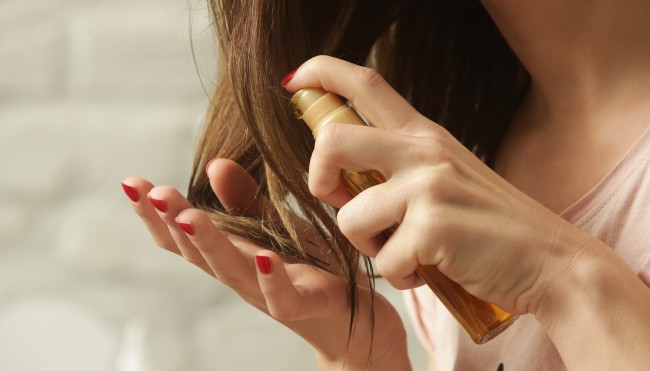These are the 7 most questionable ingredients in cosmetics
Many cosmetics contain ingredients that can harm us and the environment. But you can avoid them if necessary and replace them with harmless substances. Luckily, there are plenty of alternatives. We'll show you which seven ingredients can be particularly problematic.
1. Parabens
Parabens are used in cosmetic products as antibacterial preservatives. They are included, for example, in creams, shower gels or toothpastes. The problem: substances such as methylparaben, ethylparaben, propylparaben or butylparaben can affect the human hormone balance and are suspected to increase cancer risk. In cosmetics, therefore, certain limits are met. Currently, the regulation of parabens falls under EU legislation.
2. Microbeads and liquid polymers
Microbeads (smallest plastic particles) and liquid or waxy polymers are used in cosmetic products as abrasives, fillers or opacifiers. Microbeads and poorly degradable polymers can be released into the environment via wastewater, as they cannot always be filtered. Sewage sludge from sewage treatment plants is sometimes also applied to fields. This allows microplastic particles and liquid polymer substances to penetrate our soils and food.
The CodeCheck app shows you which products contain microbeads and how you can avoid them. In the future, poorly degradable liquid polymers will also be rated more specifically in CodeCheck so that you can identify and avoid the products.
3. UV filter and UV absorber
Most conventional sun creams contain chemical UV filters. Some chemical filters are criticized because they trigger allergies more frequently than mineral sun filters. In addition, some may have potentially hormone-like effects. But our environment can also be damaged if the substances get into the sea via the skin. Some of these chemical UV filters, such as oxybenzone and octinoxate, which are declared as benzophenone and ethylhexyl methoxycinnamate in the INCI list, can accumulate in the tissues of fish and even in corals and cause damage to the genome of larvae.
4. Palm oil
Palm oil is the world's cheapest and most widely used vegetable oil. It is also included in many cosmetics. Due to increasing demand, rainforest and peatlands are being destroyed on a large scale, which catastrophically affects biodiversity, the climate and the local population. Unfortunately, palm oil is sometimes difficult to recognize on the ingredient lists.
5. Mineral oil-based substances (paraffins)
Many substances, such as paraffins, are based on petroleum. They are added to cosmetics as greasy components that make the skin look smooth, as they can be laid over the skin like a film. This film also prevents increased water loss through the skin, making it look softer. However, the effect is short-lived, because these substances do not actually improve the appearance of the skin, but may even in the long term reduce the skin's ability to regenerate and thus promote dryness. There are also risks associated with so-called MOSH and MOAH compounds, which are associated with mineral oil-based substances. Among other things, they are suspected of having carcinogenic effects.
6. PEG-based emulsifiers
Normally, water and oil cannot be mixed. However, this is possible with emulsifiers. This is why they are used in facial creams, shampoos and deodorants, for example, to combine and stabilize watery and oily components.
Most commonly used are synthetic petroleum-derived polyethylene glycols (PEGs) and PEG derivatives. Depending on the group of PEG derivatives (for example chain length) and the frequency and type of application, they can be problematic. For example, because they may make the skin more permeable to pollutants and chemicals.
7. Allergenic fragrances
We are surrounded by more and more fragrances in our everyday lives. They are also used in cosmetics such as cream, perfume, aftershave, deodorant, shampoo and soap. Often the fragrances are of chemical origin and can trigger allergies. Itching, redness and swelling are among the symptoms. With CodeCheck, you can easily detect potentially dangerous fragrances.





